If you’ve been told to follow a low FODMAP diet, you’re probably staring at conflicting food lists online, wondering what the heck you can actually eat without triggering your symptoms.
Here’s the reality: over 15,000 people we’ve worked with were given a basic FODMAP handout by their doctor and told “good luck” — with no real guidance on portions or food preparation. If that’s you, you’re definitely not alone, and I’m glad you found this article.
In this comprehensive article, I’ll walk you through each food group and what’s safe to eat — with clear portion sizes so you know how much is actually low FODMAP and when it tips over. We’ll also clear up some of the confusing foods people always ask about, like tofu versus soy milk, sourdough bread, dairy options, and fruit portions.
Here is a video we made, otherwise there is a written version underneath.
What Are FODMAPs
Before we dive into the specific foods, let me quickly explain what FODMAP actually stands for, because understanding this will help you make better food choices.
FODMAP stands for:
- F – Fermentable
- O – Oligosaccharides (fructans and galactans)
- D – Disaccharides (mainly lactose)
- M – Monosaccharides (mainly fructose)
- A – And
- P – Polyols (sugar alcohols)
That’s why we just say FODMAPs for short. These are types of carbohydrates that some people can’t digest well. When they reach the large intestine, they ferment and can cause gas, bloating, cramping, and changes in bowel habits.
The eating pattern that intentionally minimizes our exposure to these FODMAP compounds is called a low FODMAP diet.
The original research comes from Monash University in Australia — they’re the researchers who actually developed this diet and continue to publish new data on it. Everything I’m sharing today is based on published research and laboratory testing from institutions like Monash. You can download their FODMAP app for a comprehensive database of foods.
Summary: FODMAPs are fermentable carbohydrates that can trigger digestive symptoms in sensitive individuals. The low FODMAP diet, developed by Monash University, systematically reduces these compounds to help identify personal triggers and manage symptoms.
Understanding FODMAP Stacking
One quick thing to understand before we dive into the food groups is something called FODMAP stacking.
Some foods are considered low FODMAP only up to a certain portion size — especially fruits and vegetables. That’s because the amount of FODMAPs in a food adds up with the quantity you eat.

For example, while half a cup of strawberries is low FODMAP, doubling or tripling that portion may “stack” those FODMAPs up and tip you into the high range and cause symptoms.
Said another way: it’s the dose that makes the poison, so make sure you follow the portion sizes listed next to each food.
Important Note: This article focuses on what you CAN eat rather than what you can’t. If I don’t mention a food you’re hoping to hear about, you can assume it’s high FODMAP and double-check it on my full ‘Eat This, Not That’ FODMAP list, which you can find a few paragraphs below. It’s been downloaded by close to a million people by this point.
Summary: FODMAP stacking occurs when eating multiple low FODMAP foods or exceeding recommended portions, causing the total FODMAP load to become problematic. Following specific portion sizes is critical to staying within safe limits and avoiding symptom triggers.
Protein Foods: Your Safe Foundation
Let’s start with the good news. Most proteins are naturally low FODMAP, which means they can form the foundation of your meals.
Remember: FODMAPs are a type of carbohydrate, so if there are no carbs in the food, then it’s FODMAP-free by default.
Meat & Poultry (All Safe):
- Beef, lamb, pork
- Chicken, turkey
- Fresh fish and seafood
- Eggs
These are all fair game, and the quantity doesn’t matter in this context because unprocessed meat doesn’t have carbohydrates and therefore no FODMAPs — they’re just protein and fat.
Important caveat: Portion size still matters for general digestion. Huge, fatty, or heavily fried portions can worsen IBS symptoms even if they aren’t FODMAP-related, because of the fat content.
The Hidden Trap: Processed Meats
Here’s where people often get confused: processed meats. Things like sausages, deli meats, and marinated proteins often contain other ingredients and fillers that are high FODMAP, like inulin, garlic, and onion, for example. So stick to plain, unseasoned proteins during your elimination phase. A lot of sauces are high FODMAP too, so you have to be careful there.
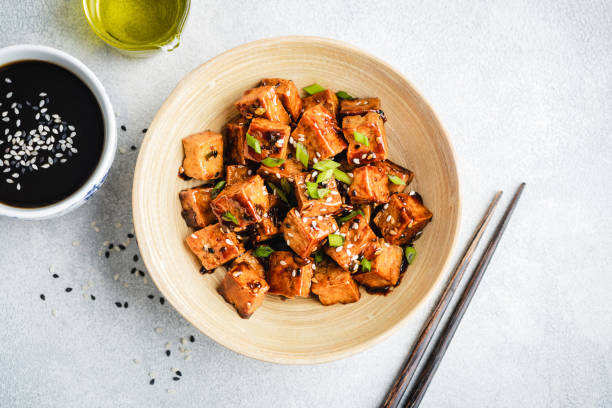
Plant-Based Proteins:
- Firm tofu – Safe at ⅔ cup, drained (170g). Silken or soft tofu isn’t really low FODMAP because it retains more of the soybean liquid, which is where the FODMAPs are concentrated.
- Tempeh – Safe at ⅔ cup (170g)
- Peanut butter – Safe at 2 tablespoons max
- Most nuts and seeds (specific amounts covered in the Nuts & Seeds section)
The Seasoning Problem
Here’s where many people completely screw up their FODMAP diet: seasoning. They think they’re being perfect with their food choices, but they’re using spice blends and sauces loaded with garlic and onion powder.
Safe Seasonings and Flavorings:
- Fresh herbs: Basil, oregano, thyme, rosemary, parsley, cilantro, dill, mint → all naturally low FODMAP
- Spices: Paprika, cumin, turmeric, ginger, cinnamon, coriander, cardamom, chili powder (without onion/garlic) → all safe
- Garlic-infused oil (the FODMAPs don’t transfer to oil)
- Lemon juice and zest
- Soy sauce (check for garlic/onion)
Pro tip: Cook your proteins simply with low FODMAP herbs and spices. The caveat with chili powder is that while it technically doesn’t have FODMAPs, it can irritate the gut, so take note of that.
Summary: Most plain proteins are naturally FODMAP-free and can be eaten freely, but processed meats and seasonings often contain hidden FODMAPs like garlic and onion powder. Plant-based proteins like firm tofu and tempeh are safe in controlled portions, and using approved seasonings ensures you don’t accidentally sabotage your diet.
If you’re just getting started, download our free Low FODMAP food list to get clarity on common gut triggers
Tap the blue button below to download our “Eat This, Not That” list as well as additional resources for bloating (it’s free!)
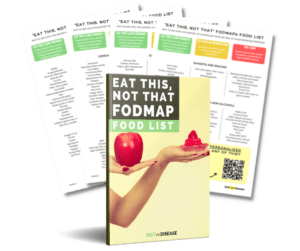
Low FODMAP Vegetables
Now let’s talk vegetables. This is where people often feel most restricted, but you actually have more options than you might think, so long as you follow the serving size and don’t exceed that in one sitting.
Leafy Green Vegetables:
- Spinach and collard greens – Safe at 1½ cups (75g)
- Lettuce – All types (iceberg, butter, romaine) are low FODMAP in large servings
- Arugula (rocket) – Safe at 2 cups (75g)
- Bok choy – Safe up to 1 cup (75g)
Portion-Controlled Vegetables:
- Broccoli – Heads/florets are safe at ¾ cup (75g); stalks contain more FODMAPs, so stick with florets
- Brussels sprouts – Safe at 4 sprouts (75g)
- Cabbage – Savoy, red, and white safe at ¾ cup (75g)
- Carrots – Low FODMAP at any normal serving (you don’t need to limit to “1 medium”)
- Green beans – Safe at 15 beans (75g)
- Zucchini/courgette – Safe at ½ cup (65g); larger serves can be high in fructans
- Cucumber – Safe up to ½ cucumber (75g)
- Bell peppers/capsicums – Red, yellow, orange, and green are safe at ½ cup (35-45g)
- Tomatoes (common, roma, cherry, grape) – Low FODMAP at 1 medium (65g) or ~5 cherry tomatoes
Root Vegetables (Great for Satisfaction):
- Potatoes – All varieties (white, red, sweet) are low FODMAP (safe at ½ to 1 medium each)
- Parsnips – Safe up to 1 medium (75g)
- Rutabaga (swede) – Safe up to ½ cup (60g)
- Turnips – Safe up to 1 cup (75g)
Pro Tip: Preparation Method Matters
Here’s something most people miss: preparation method matters. Raw broccoli might trigger symptoms in smaller amounts than cooked broccoli. Cooking can reduce the amount of FODMAPs in the food as the compounds leach out with water.
Summary: Low FODMAP vegetables include leafy greens like spinach and lettuce in generous portions, while vegetables like broccoli, Brussels sprouts, and zucchini require careful portion control. Root vegetables like potatoes are generally safe in normal servings, and cooking methods can reduce FODMAP content compared to raw preparations.
Fruits: Navigating Portion Sizes
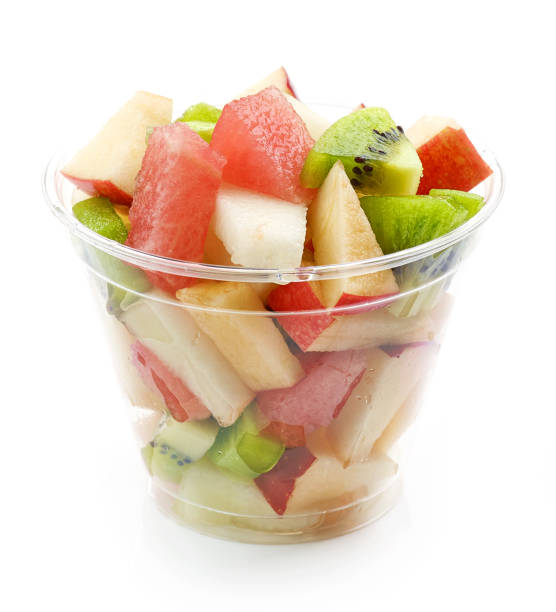
Fruit is where a lot of people slip up because there aren’t really fruits that are completely FODMAP-free. A key sugar in fruit is fructose, which is a FODMAP.
Many varieties can be low FODMAP, but we have to be mindful of the portion size. Eat too much of one thing, and it becomes high FODMAP.
Low FODMAP Fruits (Safe in Controlled Portions):
- Oranges, mandarins, lemons, limes – Most tolerate these well, as they are low in fructose
- Pineapple – Low FODMAP at 1 cup (140g)
- Cantaloupe/rockmelon – Low FODMAP at ¾ cup (120g)
- Strawberries – Safe at 5 medium max
- Blueberries – Safe at ¼ cup max
- Bananas – 1 medium, firm (not fully ripe)
- Kiwi fruit – 2 small
Special Spotlight: Kiwi Fruit
This is one of my favorite recommendations because it’s not just low FODMAP — research shows it has compounds that help with constipation and gut motility.
A study in the American Journal of Gastroenterology found that eating 2 kiwi fruits daily improved bowel movement frequency and reduced straining in people with IBS-C (constipation-predominant IBS) (1).
Summary: Most fruits contain fructose and require strict portion control to remain low FODMAP, with safe options including pineapple, cantaloupe, strawberries, and bananas in specified amounts. Kiwi fruit stands out not only as low FODMAP but also for its research-backed benefits in improving bowel function for those with IBS-C.
Grains and Starches
This is another area where people think they’re severely limited, but you actually have plenty of options.
Safe Grains:
- Rice – All varieties (white, brown, basmati, jasmine, wild, sticky) are low FODMAP
- Rice cakes, rice crackers, rice noodles – Safe, though flavored versions may contain onion/garlic
- Oats – Safe at ½ cup dry (40-50g). Larger serves creep into high FODMAP
- Quinoa – Low FODMAP at 1 cup cooked (155g)
- Polenta/cornmeal – Safe at normal serves
Understanding Pasta:
- Gluten-free pasta (rice, corn, or quinoa-based) is low FODMAP at 1 cup cooked (145g)
- Wheat pasta is not low FODMAP, unless in tiny serves (½ cup cooked)
Safe Breads and Cereals:
- Sourdough bread – Safe at 2 slices max
- Gluten-free bread – Safe if based on rice, corn, potato, or oat flours (but check labels for inulin, apple fiber, honey, etc.)
- Corn tortillas – Safe at 2 small (48g)
- Rice-based cereals – Rice Krispies, puffed rice, are safe
- Gluten-free cereals – Cornflakes and Cheerios (if GF) are fine in small serves
- Oatmeal/porridge – Low FODMAP at ½ cup dry oats (40g)
The Sourdough Secret
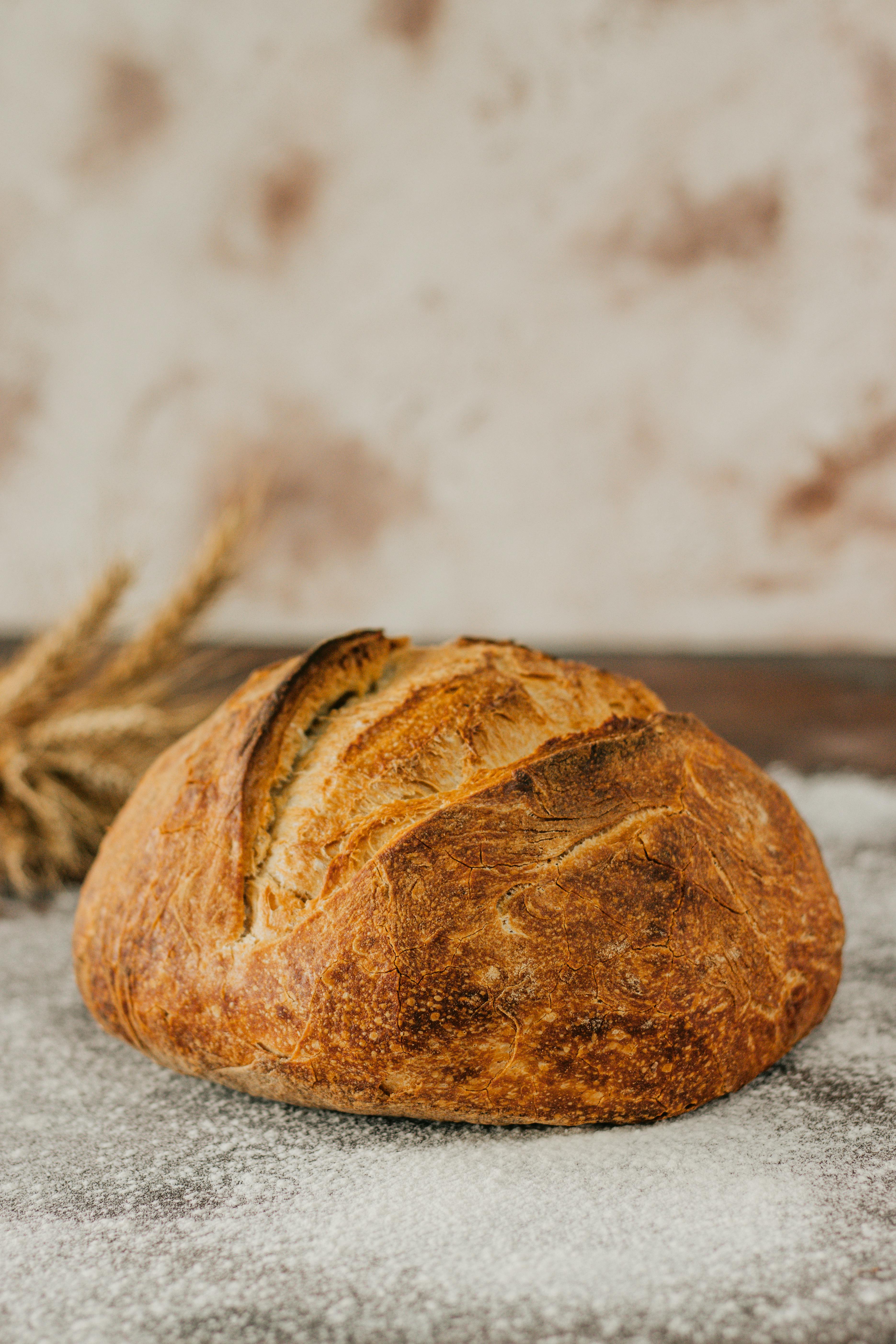
Here’s something fascinating about sourdough: the fermentation process actually breaks down the FODMAPs that are normally present in wheat.
So instead of the fermentation occurring in your gut and creating gases and other symptoms, it occurs before you eat it. That said, it needs to be real sourdough — a lot of commercial “sourdough” often isn’t fermented long enough.
Summary: Rice and rice-based products are universally safe grains, while oats and quinoa are low FODMAP in controlled portions. Authentic sourdough bread is safe because fermentation breaks down wheat FODMAPs, but gluten-free alternatives made from rice, corn, or potato flours are the most reliable options.
Dairy and Alternatives
The main sugar found in dairy products is called lactose — I’m sure you’ve heard of it — and it is in fact, a FODMAP. But you don’t have to give up dairy completely because many dairy foods are low lactose already and therefore can be considered low FODMAP.
Safe Dairy Options:
- Hard cheeses – Cheddar, Swiss, Parmesan (virtually lactose-free)
- Soft cheeses – Brie, camembert, and feta up to 40g
- Lactose-free milk and yogurt – The lactose is already removed from these foods
- Butter – Safe in normal amounts
- Lactose-free ice cream
Why Many Cheeses Are Safe
Here’s why many cheeses are safe: the aging process breaks down most of the lactose. Parmesan, aged cheddar, and Swiss cheese contain virtually no lactose. With the soft cheeses I mentioned, you need to be careful with the quantity.
Important note about Greek yogurt: While it’s lower in lactose than regular yogurt, it still contains FODMAPs. A very small portion (around 1 tbsp/20g) can be low FODMAP, but who’s just eating 1 tablespoon? Go for lactose-free instead.
Plant-Based Dairy Alternatives:
We have to be much more mindful of the portion sizes with plant-based alternatives because they come from plants, and plants contain carbohydrates.
- Almond milk – Safe at 1 cup max
- Coconut milk – Safe at ⅓ cup max
- Oat milk – Varies by country/brand. Generally low FODMAP only at ¼ cup (30ml)
- Soy milk – Safe up to 1 cup if made from soy protein (not whole soybeans)
The Soy Milk Confusion
To clarify: Soy milk made from whole soybeans is high FODMAP, so you have to check the ingredient label. This is also why firm tofu is safe — the FODMAPs in soy are mostly in the liquid part, which gets drained off during the processing of firm tofu, while soy milk made from soybeans keeps them in.
Summary: Hard aged cheeses are naturally low in lactose and safe for most people, while lactose-free dairy products eliminate the FODMAP concern entirely. Plant-based alternatives require careful portion control and ingredient checking, particularly with soy milk which is only low FODMAP when made from soy protein rather than whole soybeans.
Nuts, Seeds, and Snacks
This is the final food group I want to cover. Since nuts and seeds are plant foods, they contain carbohydrates and typically contain FODMAPs in some quantities, so you have to be careful about portion sizes.
Safe Nuts:
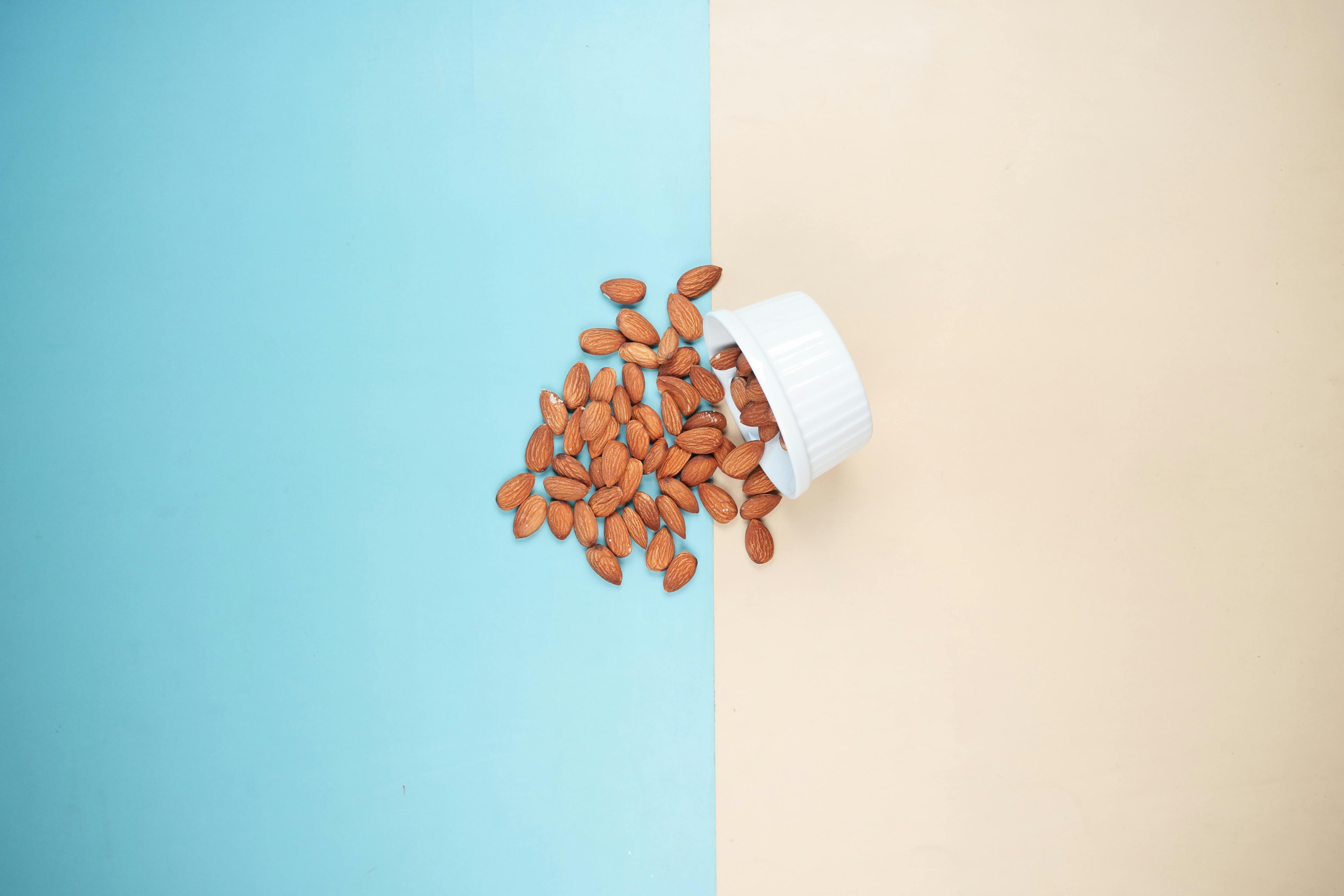
- Almonds – Low FODMAP at 18 nuts (22g)
- Walnuts – Safe at 15 halves (30g)
- Peanuts – Safe at 32 nuts (28g). Peanut butter is safe at 2 tbsp (32g)
- Macadamias – Safe at 15 nuts (30g)
What about cashews and pistachios? Sorry, these are very high in FODMAPs.
With nuts, the key is portion control — a small handful is usually fine, but double it and you’ve likely tipped into the high FODMAP zone.
Safe Seeds:
- Pumpkin seeds – Safe at 2 tbsp (23g)
- Sunflower seeds – Safe at 1 tbsp (15g)
- Chia seeds – Safe at 2 tbsp (24g)
- Flaxseeds (linseeds) – Safe at 1 tbsp (15g)
Special Spotlight: Chia Seeds
These are fantastic for gut health beyond just being low FODMAP. They’re high in omega-3 healthy fats and high in soluble fiber, which can help regulate bowel movements.
Simple Snack Options That Work:
- Rice cakes with peanut butter (2 tbsp)
- Hard cheese
- Carrot sticks with tahini (2 tbsp)
- Olives – Low FODMAP, safe at ~15 small or 2 tbsp
- Popcorn – Safe up to 7 cups popped
Summary: Nuts like almonds, walnuts, peanuts, and macadamias are low FODMAP in small portions, while cashews and pistachios should be avoided entirely. Seeds including chia, pumpkin, and flaxseeds offer gut health benefits and are safe in measured amounts, making them ideal additions to snacks and meals when portion sizes are respected.
What Should Your Next Steps Be?
If you’re feeling overwhelmed by all this information or struggling to implement the low FODMAP diet effectively, professional guidance can make all the difference.
We’ve helped over 15,000 people successfully navigate the low FODMAP diet and identify their specific triggers. With personalized support, you’ll learn exactly which foods work for your body and how to reintroduce foods systematically.
To learn more, I invite you to apply for a nutrition assessment call with us. We’ll help you make sense of what’s really happening beneath the surface and map out the next steps to get you feeling better — not just temporarily managing symptoms, but addressing the root causes for long-lasting relief.

What does that mean that my e mail wont be published.?
Joan. Capron 8400. Championships Gate Blvd Davenport FL
, 33896
You mention specific portions, i.e. 2 tablespoons of peanut butter.
When is it ok to consume 2 additional tablespoons? Wait until the next day, or evening if the initial portion was for breakfast? Is there a timetable relating to digestion?
Thanks.
This looks even more promising than the information I have already received from you in the past 4-6 weeks. I would LOVE to be able to obtain it as a PDF so I could download and print it in order to not have to read and study it on my computer where I am adding to my to my electromagnetic exposure, exacerbating my symptoms and risking further damage to my already-struggling eyes. I’ve only skimmed it now, and my eye stress is already nagging at me, but I want to study and learn ore from it. Thank you for all you are teaching so many of us about our health and wellness options.
Thank you so much for such an informative and helpful article. So appreciate this. I unfortunately could not download the latest Fodmap list.
Peggy,
You can make a printable PDF from the website.
If you don’t know how to do it, can someone in your life help you?
Another idea is that public libraries have a technology person whose job it is to assist people in doing things like that, so make use of that resource.
What is the cost of the consultation? I want to know before committing to a session.